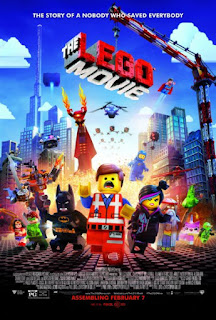Film Review: Tom Tykwer's "Run Lola Run" (1998) - Non-Linear Structure
 |
| Figure 1. ‘Run Lola Run Movie Poster’ |
Action, excitement, a ticking time bomb that’s waiting to explode, “Run Lola Run” (1998), directed by Tom Tykwer, is a suspense filled journey that follows the story of Lola and her boyfriend Manni, who are both against the clock and the world to make a payment in time to Manni’s gangster boss before he is killed by them.
The film follows a non-linear structure in that none of the events occurring are straight forward and chronological. The film is in a loop, a zig-zag formation, as if Lola is hitting a “retry” button when thing’s don’t quite go to plan.
In the beginning, Lola receives a phone call from her boyfriend Manni, who is in a state of panic. He was on his way to deliver 100,000 Deutsche marks to his boss from a job, but ends up losing the money bag on a train, and having a homeless man inspect the bag and make off with it. With only 20 minutes until the deadline, Lola is forced to come up with a plan to save Manni, as he threatens to rob a supermarket as a last resort. So, as the title of the film suggests, Lola makes a run for it. As Roger Ebert so eloquently put, “Movies about characters on the run usually involve a linear story ("The Fugitive" comes to mind), but this one is basically about running--and about the way that movie action sequences have a life and logic of their own.” (Ebert, R. 1999)
It’s exhilarating to watch Lola, played by Franka Potente, race through the city in her desperation to find a solution. The first sequence of events unfold as she rushes down the staircase of her apartment building and to the bank that her father works at, pleading for any financial help that he can give, only for it to be thrown back in her face. As she then races to meet Manni, she finds him robbing the supermarket, for them to then be surrounded by police, and Lola being shot. This is then where we see the non-linear structure take place, as we then cut back to the beginning where Lola is still alive, and has received the frantic phonemail from Manni. “This narrative structure provides the film with an opportunity to imbue itself with philosophical weight, it takes advantage of this with whimsy and freshness.” (Lorber, D. 1999) The morale of the story within these sequences say that our actions have consequences, and how the ‘chance’ and ‘will’ differentiate. There is even a sequence where Lola tries to make the marks at a casino by defying ‘chance’ and using sheer determination to win a game of roulette, along with an ear piercing scream.
 |
| Figure 3. ‘Lola Screaming in the Casino’ |
Along with the zig-zag effect that is channeled throughout the film, there are also brief moments of flash-forward sequences, where Lola’s short interactions with bystanders then cuts to their futures briefly, such as one woman winning the lottery. “Tykwer’s decision to explore multiple modes echoes the film’s exploration of possibility and potential — of manifold destiny.” (Landekic, L. 2013) This relates to the theme of actions, no matter how small and insignificant, can have consequences without the person’s realisation. Whether their future’s are directly relating to Lola is another case. There is even the trope of flashbacks that occur at some point, where Lola and Manni discuss their relationship and other philosophical points, allowing the audience to explore the characters’ relationship and who they are as people in their beliefs and emotions.
There are three different timelines occurring in the film, and they all begin with Lola running down the staircase to find Manni. Again, the smallest of changes create a big difference, such as Lola arriving slightly later to the bank in each sequence as they progress. One thing that can be noted though is that in the third timeline, upon her arrival to the bank, where Lola is quite late and misses her father, the security guard says to her, “You finally came.” It’s as if he remembered the previous two meetings with Lola, despite the fact that they were in different timelines, thus enhancing the idea of a non-linear structure, and perhaps even a postmodern theme as well.
Without a doubt, this movie is an exhilarating experience, and as Lola dashes her way through crowds and streets, you can feel your own heartbeat racing as if you’re running with her. It’s almost exhausting watching her become out of breath, and the suspense of racing against time will leave you on the edge of your seat.
Bibliography
Ebert, R. (1999) ‘Run Lola Run’ (02/07/1999) In: https://www.rogerebert.com [Online] At: https://www.rogerebert.com/reviews/run-lola-run-1999 (Accessed on 12/12/2019)
Landekic, L. (2013) ‘Run Lola Run 1998’ (05/02/2013) In: https://www.artofthetitle.com [Online] At: https://www.artofthetitle.com/title/run-lola-run/ (Accessed on 12/12/2019)
Lorber, D. (1999) ‘REVIEW: Tykwer’s “Run Lola Run” is a Clever, Original European Offering’ (04/06/1999) In: https://www.indiewire.com [Online] At: https://www.indiewire.com/1999/06/review-tykwers-run-lola-run-is-a-clever-original-european-offering-82220/ (Accessed on 12/12/2019)
Illustrations
Figure 1. ‘Run Lola Run Movie Poster’ (1998) [Movie Poster] At: https://www.imdb.com/title/tt0130827/mediaviewer/rm215942400 (Accessed on 12/12/2019)
Figure 2. ‘Lola and Manni’ (1998) [Movie Still] At: https://www.imdb.com/title/tt0130827/mediaviewer/rm2143847680 (Accessed on 12/12/2019)
Figure 3. ‘Lola Screaming in the Casino’ (1998) [Movie Still] At: https://www.imdb.com/title/tt0130827/mediaviewer/rm1892189440 (Accessed on 12/12/2019)




Comments
Post a Comment